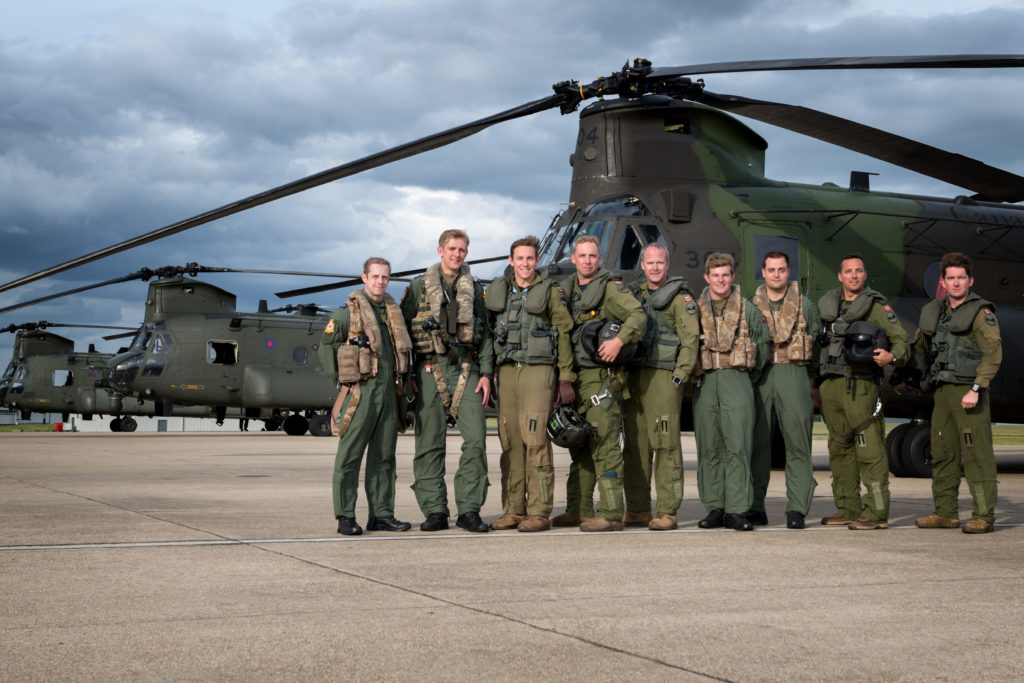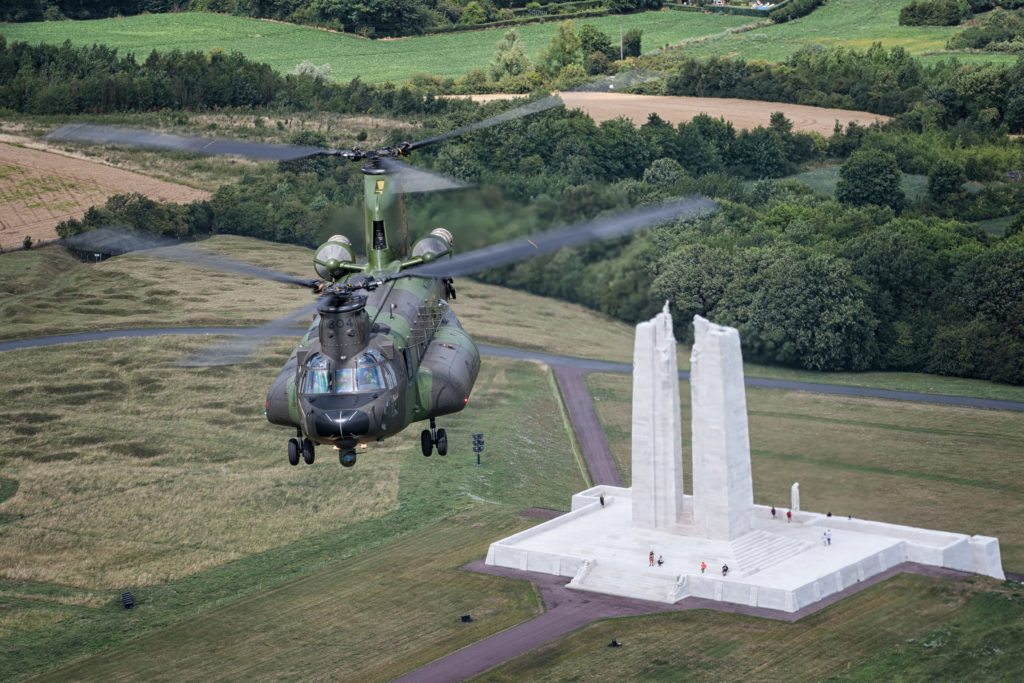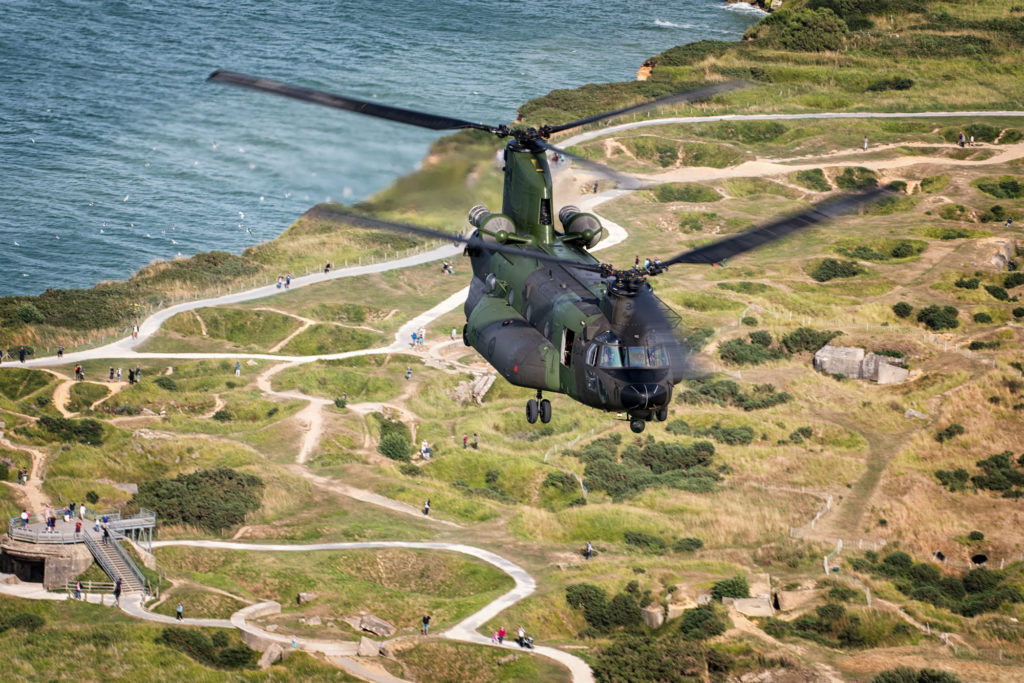Estimated reading time 7 minutes, 58 seconds.
Canada’s preparedness to defend the values of freedom, democracy and the rule of law has taken its Armed Forces into conflict alongside their British counterparts throughout modern history. In the foundry of these wars, firm bonds have been formed that permit vital cooperation today, and a shared remembrance of sacrifices past.

An opportunity to strengthen these ties through both training and commemoration came this year, as it marks the 100th anniversary of the Battle of Vimy Ridge, a First World War action that saw for the first time the entire Canadian Expeditionary Force fighting in unison, sustaining over 10,000 casualties with four Victoria Crosses being awarded.
During a visit coinciding with the Royal International Air Tattoo, the Royal Canadian Air Force (RCAF) planned to commemorate the anniversary with a fly-past of the memorial that now stands at the highest point of the historic ridge.
Taking the opportunity to demonstrate their strategic lift capability, the RCAF used a CC-177 Globemaster to airlift a CH-147F Chinook to the United Kingdom–the first time this has been achieved outside of North America. Crews from 450 Tactical Helicopter Squadron normally based at Canadian Forces Base Petawawa, Ont., took up temporary residence at Royal Air Force (RAF) Odiham in Hampshire. Whilst there, they were hosted by 18 Squadron of the RAF, who operate similar but slightly older Chinook variants. Naturally, the two squadrons took the opportunity to conduct joint training exercises during the visit.

RCAF pilot Maj Richard Harris was uniquely able to compare their aircraft, having previously flown the U.K. Chinook variants during his service as an RAF officer.
“We have a little more fuel, but the major difference is our avionics,” he said. “We have a fully integrated Rockwell Collins glass cockpit and a DAFCS.”
The digital automatic flight control system (DAFCS, pronounced ‘daffics’) is what sets the Canadian ‘F’ model aircraft apart from its legacy U.K. variant, providing not only more advanced autopilot modes in forward flight, but also allowing the pilot to command precise hover manoeuvring from a stick-top coolie-hat switch.
During their visit, the Canadian crews were keen to work alongside their RAF counterparts, with three specific formation sorties planned. A flight around London’s heli-lanes into a low-level coastal navigation exercise would provide an introduction to the airspace, followed by a more tactical sortie focusing on airborne assault techniques with a time-on-target in Yorkshire, some 200 miles (about 320 kilometres) north. Finally, the crews would take a unique commemorative opportunity on a flight to France, overflying not only the Vimy memorial but also several Second World War battlefield landmarks, such as the Normandy beaches and Pegasus Bridge.

While adverse weather dictated a slight deviation from the original plan, the crews were able to gain a lot of value from working with their British counterparts. Maj Harris explained that while they had been able to focus on tactical development, he felt that the engineering teams had benefited equally from the opportunity to cross-pollinate, sharing ideas, standards and solutions to common issues.
He was also ambitious about the Canadian aircraft’s capabilities after it achieves its forthcoming full operational capability (FOC).
“I firmly believe that we could self-ferry across the pond,” he said. “The forthcoming FOC will almost certainly mean greater use of this outstanding Canadian asset later next year over a much wider sphere of influence and the Squadron looks forward to this challenge.”
Also excited about the prospect of crossing the Atlantic was RAF Flt Lt Gavin Inglis, who is due to begin an exchange tour with the RCAF in the near future and who led the commemorative formation. While he has not yet flown the Canadian aircraft, he is nonetheless impressed by its capability.
“The F-model has a lot of equipment that the RAF will start to see in our Mk6 aircraft. While our current models have glass cockpits and are extremely capable, the Mk6 brings an increased level of integration, including the DAFCS,” he said.
Arguably the most advanced Chinook variant yet produced, the Canadian aircraft is distinguishable from its British brethren not only by the camouflaged colour scheme (as opposed to the RAF olive drab), but also its larger sponsons, which house additional fuel tanks, bringing its range up to an impressive 1,200 kilometres. This was a key planning consideration for the France sortie, as Maj Harris explained.
“The CH-147F had five hours of endurance, whereas the U.K. Chinook only had four, even with its extended range fuel system,” he said.

Other distinguishing features are less obvious. Both aircraft carry optical sensors under the nose, with the U.K. variant fitted with the Selex ES Titan 385 ES-HD while the Canadian machine sports a sensor based on the increasingly ubiquitous L3 Wescam MX-15. While these sensors may prove useful in non-traditional intelligence, surveillance and reconnaissance roles, Chinook operators of both services are far more likely to employ them in low-illumination and degraded visual environment (DVE) conditions to improve their situational awareness, and ultimately their safety.
With every available seat filled for the formation flight over France, the importance of commemorating their individual and joint heritage was evident among crews of both nationalities, one of them describing it as a “once in a lifetime experience.”
“Overall the detachment was extremely successful, with many new concepts exercised and much food for thought as to how we can foster the U.K./Canadian relationship more,” said Harris.
While the commemoration obviously provided pause for collective reflection, the minds of the crews of both nations seem to be focused on a future of continued cooperation.









hello, can you tell me how I could go about gaining access to the photos from this trip ? I was on the trip and lost all my pictures.
Hi Shelley, please send an email to lisa@mhmpub.com and we can connect you with the photographer who took the photos. Thanks!